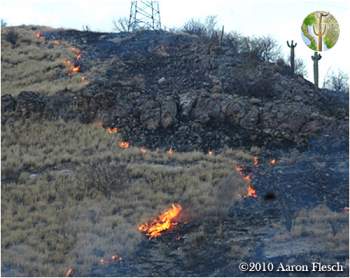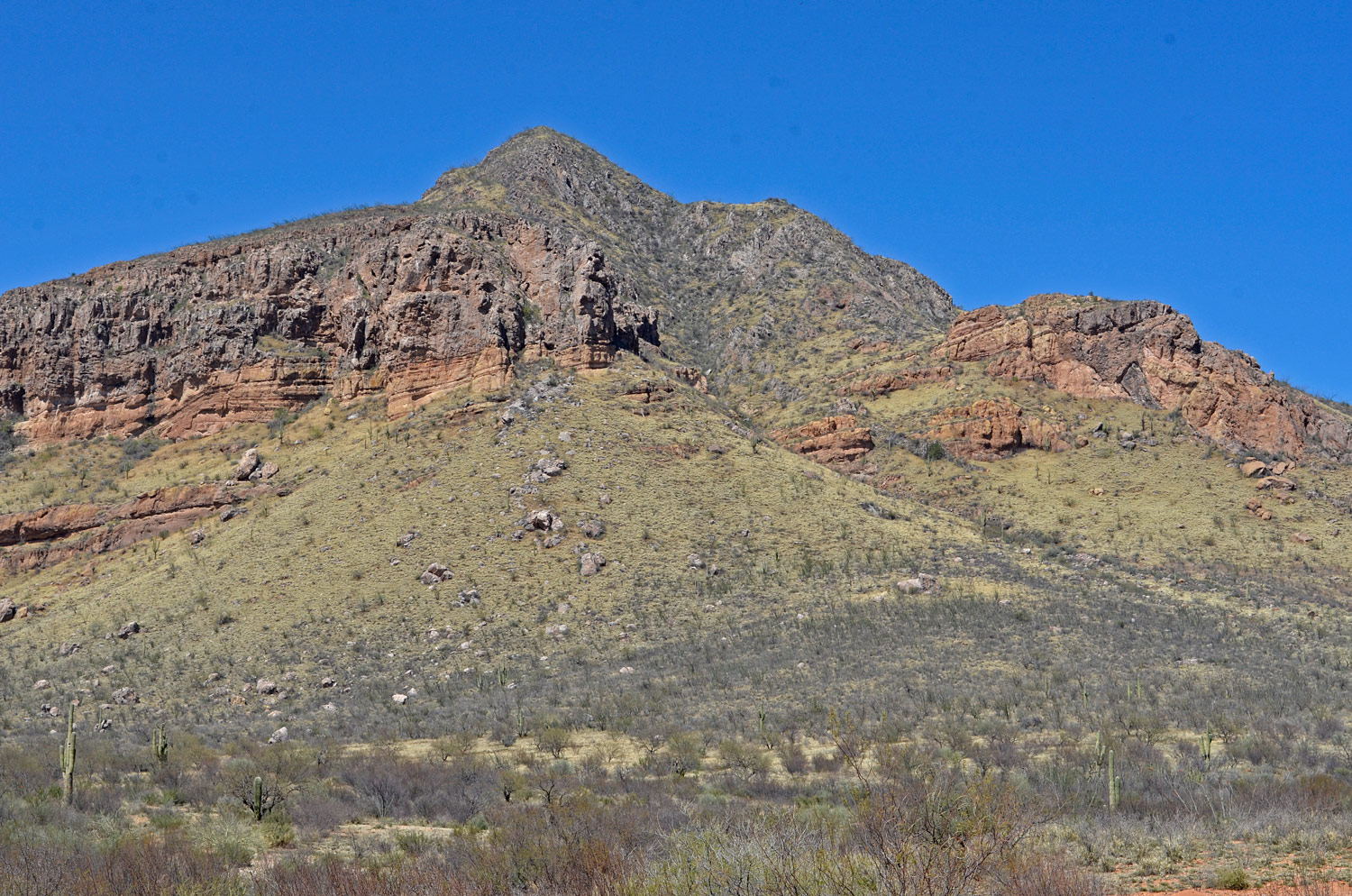Buffelgrass (Pennisetum ciliare) and Natalgrass (Melinis repens) in Sonora
 It's becoming common knowledge that buffelgrass (Pennisetum ciliare) is a huge problem for native vegetation in the Sonoran Desert of southern Arizona. In Sonora the problem is much worse. Vast areas of Sonora are over-run with buffelgrass. Ranchers in Sonora continue to blade and till desert and thornscrub to plant this invasive grass, which helps as cattle forage primarily only in the short-term. Once established the grass becomes less favored by cows unless there is little else.
It's becoming common knowledge that buffelgrass (Pennisetum ciliare) is a huge problem for native vegetation in the Sonoran Desert of southern Arizona. In Sonora the problem is much worse. Vast areas of Sonora are over-run with buffelgrass. Ranchers in Sonora continue to blade and till desert and thornscrub to plant this invasive grass, which helps as cattle forage primarily only in the short-term. Once established the grass becomes less favored by cows unless there is little else.
Unfortunately continued drought and poor range conditions in Sonora make blading one's ranch for buffelgrass seem like an attractive option. Government programs can also help subsidize planting.
Buffelgrass out-competes native species especially on Sonoran Desert slopes, sometimes becoming almost 100% of vegetative cover. This is especially problematic for saguaros and other cacti, which often prefer the same habitat, but are not able to withstand wildfire. Buffelgrass is very fire-adapted and spreads fire readily, burning out native plants and hitting saguaros and other cacti the hardest.
The Plains of Sonora subdivision of the Sonoran Desert has been especially hard hit by buffelgrass. See more about buffelgrass here.
Natalgrass (Melinis repens) is becoming a major invasive in some areas of warmer, wetter Sonora in elevations above the valley floor. I've seen places where slopes are completely dominated by this species. Less known than buffelgrass, an eye should be kept on this species. It has spread to some of the most remote places I've been in Sonora. It's hard to hate this grass since it can be very pretty, especially when back lit by sunshine.
Tom Van Devender has wrote more about Melinis repens at the Sonoran Desert Museum website.

